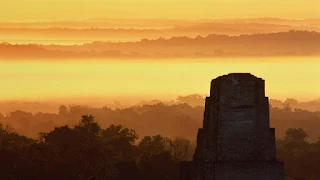-
Archaeologists have found that the ruined city of Chichen Itza in Mexico, which attracts about two million tourists from around the world every year, hides a horrific secret from the Maya people.
Archaeologists have found that the ruined city of Chichen Itza in Mexico, which attracts about two million tourists from around the world every year, hides a horrific secret from the Maya people.
The study revealed that the Maya people engaged in brutal child-killing rituals to please the gods about 1,000 years ago.
Scientists in the ancient city of Chichen Itza found skeletal remains using the latest technologies by an international team of scientists, and the results of their study concluded that the victims were boys between the ages of 3 and 6 years, and some of them were twins.
The current findings refute previous theories that the majority of victims of human sacrifices in the city's temples were girls or young women.
As part of a bloody public event, boys were slaughtered with knives, spears or axes before placing their bodies in an underground storage room.
The study was led by researchers at the Max Planck Institute for Evolutionary Anthropology in Leipzig, Germany.
Chichen Itza is one of the New Seven Wonders of the World and was once a thriving city, originally built by the Mayans about 1,500 years ago. The Maya engaged in the brutal act of human sacrifice because they believed that blood was a powerful source of nourishment for their gods, and that in return they would receive rain and fertile fields.
Extensive evidence of ritual killing, including the physical remains of sacrificed individuals and representations in monumental art, has been discovered at the former Chichen Itza.
In 1967, the remains of more than 100 young children were found in an underground chamber known as "Chulton", in the city of Chichen Itza.
The room was expanded to connect to a small cave. These subterranean landmarks were widely viewed at the time as points of contact with the underworld - the supernatural world of the dead.
In the new study, scientists conducted an in-depth genetic analysis on the remains of 64 children from these individuals inside the room to reveal their gender.
Dating of the remains revealed that the chamber was used for funerary purposes for more than 500 years, from the 7th to the 12th century AD, but most of the children were buried during the 200-year period of Chichen Itza's political heyday from 800 AD to 1000 AD.
Genetic analysis revealed that all 64 children tested were male, including two pairs of identical twins.
"Because such twins occur naturally in only 0.4% of the general population, the presence of two sets of identical twins in Cholton's room is much higher than what would be expected by chance," the scientists point out.
In fact, the results suggest that at least a quarter of the children were in close contact with at least one other child in Chulton.
Perhaps the Maya viewed their “close biological kinship” as somehow a better offering to the gods.
The research team explained that twins hold a special place in the myths of origin and spiritual life of the ancient Maya. The sacrifice of twins is a major theme in the sacred Maya council book Popol Vuh, a collection of mythological and historical stories of the K'iche'i people.
Furthermore, the analysis showed that these young victims - all local Mayans - followed similar diets, indicating that they were raised in the same family, that is, they show a first or second degree family connection.
Data indicate that most of the children were sacrificed and buried during the 200-year period of Chichen Itza's "political heyday" between 800 and 1000 AD.
The Maya civilization arose in about 2600 BC, and flourished in Central America for about 3,000 years, reaching its peak in the period between 250 and 900 AD.





It is horrendous.
ReplyDelete